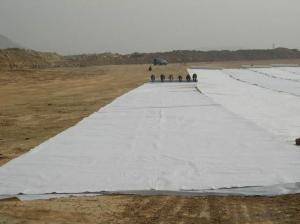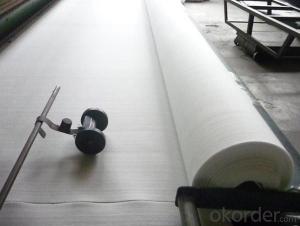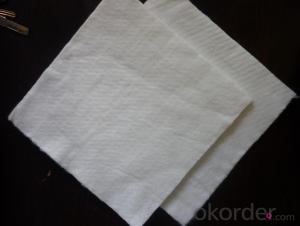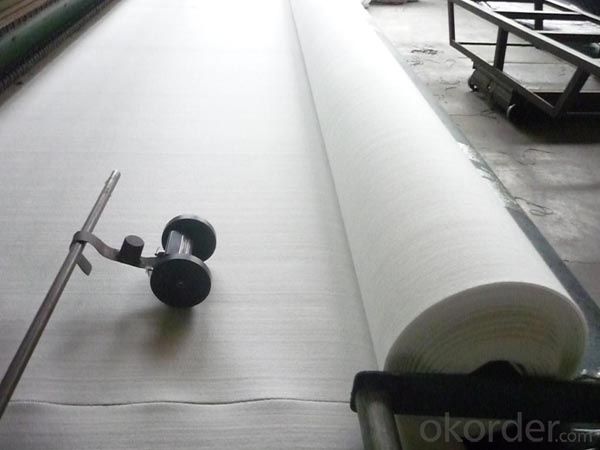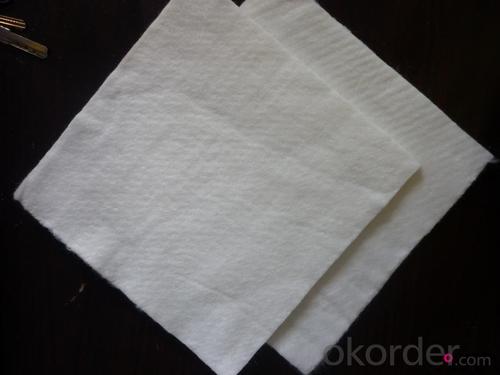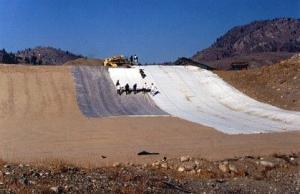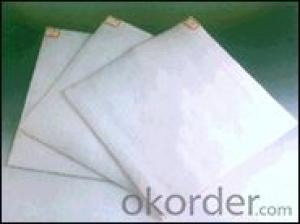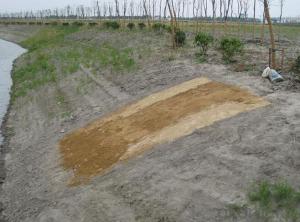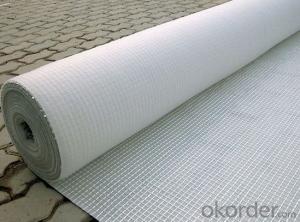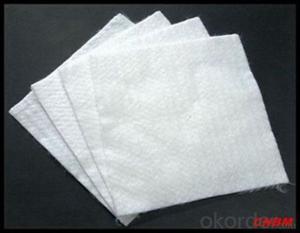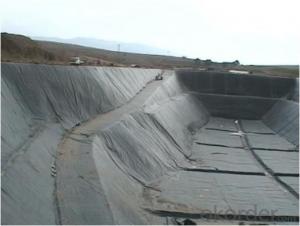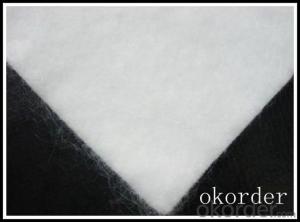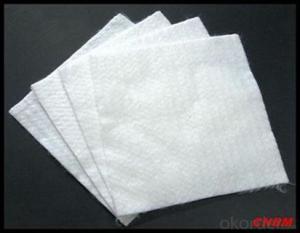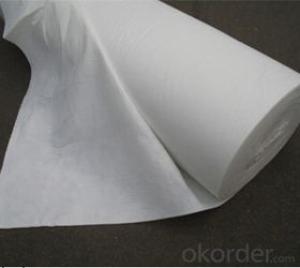Tela Geotextil Para Que Sirve - Poliester Nonwoven Geotextile Fabric for Construction
- Loading Port:
- Qingdao
- Payment Terms:
- TT OR LC
- Min Order Qty:
- 50000 m²
- Supply Capability:
- 5000000 m²/month
OKorder Service Pledge
OKorder Financial Service
You Might Also Like
Product Description:
1,Specification of Polyester Nonwoven Geotextile Fabric for Construction
1)Area Weight: 100g/m2-1500g/m2
2) Width: Within 6 m (1m-6m)
3) Length: 50m-100m/roll (as per request)
4) Material: Polypropylene or polyester
2,Specialities of Polyester Nonwoven Geotextile Fabric for Construction:
1) Staple fibers needle punched nonwoven geotextile
The geotextile is made of polypropylene staple fibers on cross-laying equipment and needle punched equipment. It owns the advantages of acid and alkali resistance, erosion resistance, aging resistance, large strength, stable size, good filtrability etc.
2) Filament nonwoven geotextile
Filament geotextile has features as follows: High strength, good capacity of elongation and high biology tolerance, alkali tolerance, acidity tolerance, weather resistance good filtration and fine drainage capacity etc. Also it is of low cost, easy in construction and use effects.
3,Package of Polyester Nonwoven Geotextile Fabric for Construction:
Each roll is wrapped with plastic film.
4,Application of Polyester Nonwoven Geotextile Fabric for Construction:
1) Filtration :
The filtration layer of the dykes, river canal, seacoast, concrete slope, retaining walls. At the same time of preventing the clay granule from passing, it allows the water and the gas pass through freely.
2) Separation :
The isolation of the railway dregs and the roadbed, roadbed and the soft base, surface of the airdrome and parking lot and the groundsill, different dam materials. It isolates the soil and the gravel of two kinds different granule pathway from the groundsill or other buildings.
3) Protection :
It prevents the bank from being washed out, protects the bank and the bottom, prevents the water and soil from being washed away.


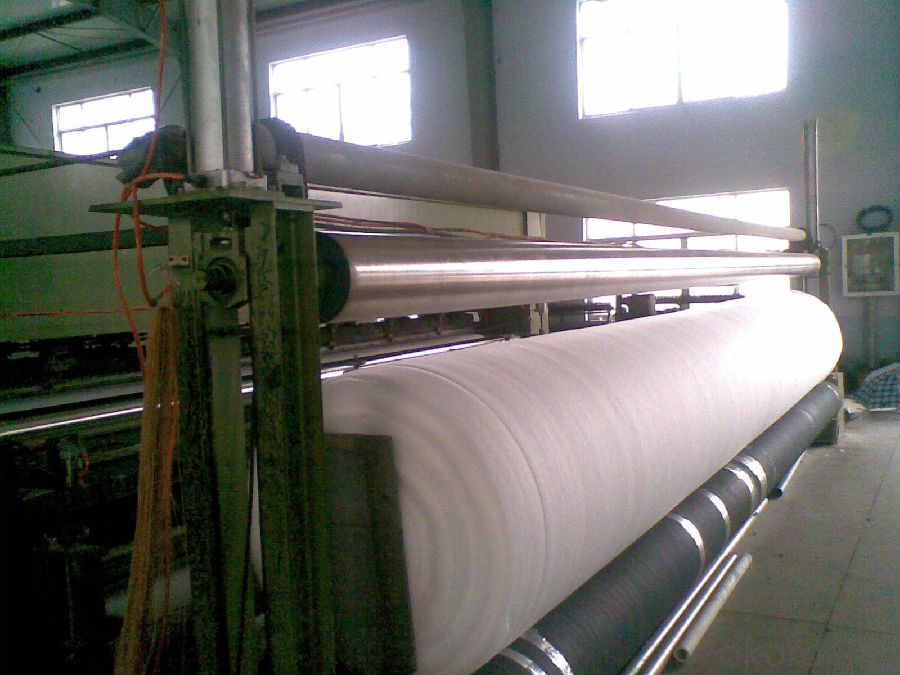
6.FAQ
We have organized several common questions for our clients,may help you sincerely:
1>How about your company?
A manufacturer & supplier focuses on the production of construction materials, including but not limited to PP staple fiber, geotextile geo-grid, geo-bag etc. Customized product is also available based on your detailed requirements.
2>How long can we receive the product after purchase?
It takes about 1 to 4 weeks to finish the production based on the specific production schedual. Then it will depend on the shipping time from loading port to the destination port.
- Q: Mainly on the cement concrete laying asphalt overlay and deck pavement, a bit puzzled, sticky words and how to design more
- Stress absorption layer thickness greater than 4cm, geotextile in the next, the stress absorption layer thickness of less than 4cm, geotextile on the
- Q: Can geotextiles be used in mining applications?
- Yes, geotextiles can be used in mining applications. They are commonly used in mining for various purposes such as erosion control, soil stabilization, and filtration. Geotextiles can help to prevent soil erosion on slopes, reinforce weak soil structures, and separate different materials in mining operations. Additionally, they can aid in water management by acting as a barrier or filter to control sedimentation and drainage.
- Q: What are the standards and specifications for geotextiles?
- The standards and specifications for geotextiles are defined by various organizations such as the American Society for Testing and Materials (ASTM), the International Organization for Standardization (ISO), and the Geosynthetic Institute (GSI). These standards cover aspects such as tensile strength, elongation, thickness, permeability, and durability of geotextiles. They also provide guidelines for testing methods, installation practices, and performance requirements to ensure the quality and effectiveness of geotextile products in various applications like soil stabilization, drainage, erosion control, and filtration.
- Q: What are the design considerations for geotextile applications?
- Some design considerations for geotextile applications include the type and weight of the geotextile material, the strength and durability requirements, the expected level of permeability, the ability to withstand environmental conditions such as UV exposure or chemical exposure, and the compatibility with other materials used in the project. Additionally, factors such as installation methods, load distribution, and long-term maintenance should also be taken into account during the design process.
- Q: How to determine the nominal breaking strength of filament spunbonded nonwoven geotextile
- You can use a dedicated geotextile strong test machine detected.
- Q: How do geotextiles improve the performance of pavements?
- Geotextiles improve the performance of pavements by providing reinforcement, separation, filtration, and drainage functions. They distribute the loads more evenly, prevent the mixing of different layers, filter out fine particles, and enhance water drainage, thereby increasing the overall durability and lifespan of the pavements.
- Q: Geotextile strength index with interpolation method how to calculate? Then geotextile variation, I do not quite understand, pro, if you know whether to tell me Oh! Very anxious
- Geotextile strong indicators of the interpolation method: For example: geotextile 150 grams of breaking strength is 4.5KN, geotextile 100 grams of breaking strength is 2.5KN, then the geotextile 130 grams of broken strength is how much? The calculation method is: 4.5KN-2.5KN = 2KN (that is, 50 grams of geotextile strength) 2KN by 50 grams multiplied by 30 grams is equal to 1.2KN then geotextile 130 grams of breaking strength is 3.7KN.
- Q: What is the difference between woven and non-woven geotextiles?
- Woven geotextiles are made by interlacing yarns or fibers together, creating a strong and durable fabric. They have a high tensile strength and are commonly used for applications that require high load-bearing capacity, such as stabilizing soil or preventing erosion. Non-woven geotextiles, on the other hand, are made by bonding fibers together using heat, chemicals, or mechanical processes. They are generally less strong and more flexible than woven geotextiles. Non-woven geotextiles are often used for filtration, separation, or drainage purposes, where their permeability and ability to retain fine particles are important factors.
- Q: Geotextile vertical permeability coefficient to retain a few digits
- According to GB / T-1998 in the short wire geotextile permeability coefficient, K = 1.0-9.9 between, so this coefficient should be retained after a decimal.
- Q: Road overhaul of the original concrete pavement after shaving asphalt, anti-cracking is geotextile or geogrid more
- Generally used in the geotextile, generally used in soft foundation reinforcement treatment; slope protection; road anti-reflective crack structure layer; drainage system; green belt
Send your message to us
Tela Geotextil Para Que Sirve - Poliester Nonwoven Geotextile Fabric for Construction
- Loading Port:
- Qingdao
- Payment Terms:
- TT OR LC
- Min Order Qty:
- 50000 m²
- Supply Capability:
- 5000000 m²/month
OKorder Service Pledge
OKorder Financial Service
Similar products
Hot products
Hot Searches
Related keywords
